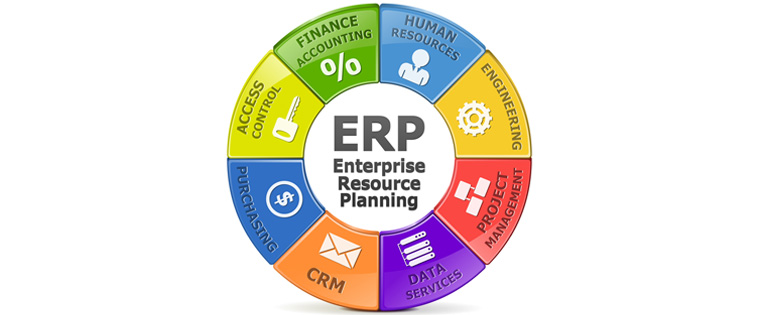Capitalize on Blended Learning to Deliver Top Notch ERP End-user Training

Is your organization striving to boost efficiency, streamline processes and workflows? Then you need to focus on Enterprise Resource Planning (ERP) implementation. But the efficiency of your organization won’t go up by itself when you implement ERP systems.. You should train your employees at all levels on the ERP to ensure they utilize it optimally. When employees use the ERP system effectively, their individual performance increases and thereby, the overall efficiency of your organization.
The Canadian Center of Science and Education research revealed ‘training activities’ played a crucial role in successful ERP implementation and had a significant effect on organizations’ performance. Taiwan’s National Central University professors’ study shows that ‘training and effective communication’ are the major Critical Success Factors (CSFs) for ERP success.
Given the undeniable importance of training, how can you train your employees on ERP implementation? What is the best way? Is it Instructor-Led Training (ILT) or Online training? ERP implementation involves complex processes and business process reengineering (BPR) and change management issues. So, you can’t depend wholly on one training approach. To train your end-users or employees effectively on new the ERP software, you need a blended training approach.
You will require different training approaches at various stages of the ERP implementation. To deal with change issues before implementing ERP, you need video-based learning. To help end-users become familiar with using the new ERP software and understand the complex processes, you need ILT workshops and then you can gradually move on to training reinforcement through microlearning modules. This blog explains how a blended learning approach can forge a winning ERP end-user training program for your employees.
Change Management with Blended Learning
Before you begin your Enterprise Resource Planning (ERP) end-user training, you need to deal with the issues of change for smoother implementation. The 2014 ERP Report: Organizational Change Management states that 50% of companies cited organizational change management as the primary issue causing operational disruptions. Your organization needs to have an Organizational Change Management (OCM) framework to manage the impact of new business processes, cultural changes, and hierarchical changes.
The Chicago-based WhiteLight Group began implementing ERP, but employees weren’t prepared for the cultural changes. Most of them were accustomed to paper-based processes, so moving them to a centrally digitized system proved to be a challenging task. Senior executives weren’t willing to adopt the new ERP system but the younger employees were more than willing to move over. This case study shows the importance of change management issues. What the firm understood from this was that dealing with employees on organizational and process changes right from the beginning is the key to successful ERP implementation.
You can communicate the imminent changes in several ways. One way of doing this is by conveying the decision to implement ERP to employees at all levels in a phased manner. You can cascade the information through e-mails, posters at the cafeteria and in the lobbies. Functional heads of each department can share the ERP implementation plan with their junior executives in meetings on how it can change the work processes and explain the organizational changes that would occur and have meaningful discussions.
However, these will eat away your precious time and costs, and besides, the communication may not be consistent at all times. Your management board or Chief Executive Officer (CEO) can talk about the changes that will take place due to ERP implementation through videos, virtual classroom sessions, webinars, and WebEx programs with a larger team. With these methods and mediums, employees will get to know the necessity of ERP and their fears will be allayed. In turn, their resistance and attitude towards ERP can change and they will start co-operating with the corporate vision.
ILT Workshops for ERP End-user Training
Re-engineering your business processes and customizing the ERP for your business requirements will bring drastic changes in the jobs of the workforce and flow of business processes. Classroom or instructor-led training workshops are effective to communicate with employees. They are also useful to explain the key concepts involved in using the ERP software.
Begin the instructor-led training at least two months prior to ERP go-live in your organization. You can conduct classroom workshops to train your end-users on ERP key concepts, new business processes, and their roles and responsibilities. Classroom training at a stretch for two to three weeks can hamper your employees’ productivity, working hours will be wasted, and the training can become a cognitive burden. In the end, they won’t remember anything, except for a few details. Instead of one or two weeks’ ILT/classroom workshops on ERP at a stretch, conducting classroom workshop sessions one or two hours a day will reduce the burden on employees, instructors, and management. This can be agradual process and gives time to assimilate the concepts. ILT or classroom sessions can be engaging and employees can ask their doubts about the work processes immediately. This approach will definitely improve their understanding of the ERP system.
End-user Training with Watch-Try-Do Simulations
Though ILT is effective, it may not work in every situation. You can extend your classroom training with online learning. Practical exercises using software simulations in online training will help your employees understand how the software works.
To avoid wasting productive work hours, and costs, reach employees dispersed across the globe, online end-user training is a better option. You can deliver synchronous or asynchronous online training depending on your training needs. You can use various formats which appeal to different learning styles. You have the provision of assessments, evaluations, and feedback in online training.
A major part of end-user training is ensuring your employees learn how to use the software as applicable to their roles. Online interactive training with simulations can help your workforce master the steps of ERP. You can accomplish this with the WATCH-TRY-DO (WTD) approach in asimulated environment. In the WATCH phase, the steps in operating the software are demonstrated to employees on their systems. In the TRY phase, employees are given a chance to try the demonstrated steps. In this phase, guided help will be provided with pop up hints and highlights on the screens to prompt learners. In the DO phase, end-users execute the steps in the process by themselves. They actually perform the task by operating the software. If anyone gets stuck at some point, the Help option will be always available in the system.
These WTD sessions vary from function to function. So, you need to customize the WTD simulations according to the nature of work, roles, and responsibilities. These simulations provide an experience of handling the real system in a virtual, risk-free environment. End-users can’t afford to make mistakes after go-live in the actual ERP environment. They can be costly for your company and take a very long time to rectify. WTD simulations provide realistic and risk-free learning conditions to your employees.
End-user Training Reinforcement with Microlearning
Once you provide end-user training through ILT workshops and online training before the ERP system goes live, you need to reinforce the same even after the launch. To make this task easy, you can opt for online refresher training. ERP end-user training reinforcement needs to be done at regular intervals.
Online microlearning modules are very useful for end-user training reinforcement. Information nuggets in these modules provide just-in-time (JIT) working support. They also don’t take much of your employees’ time, because of the short duration. Your workforce can also access these 3-5 minute modules on their mobile devices.
If your ERP implementation fails, that’s not because of technology but because of improper training. This can either be due to gross negligence or a lack of understanding about the importance of training. However, now you can’t say that. You understand the importance of blended learning in providing effective ERP end-user training.
Hope you find this post useful. We would be pleased to hear from you!


![4 Ways To Train Your Employees On The New ERP Software [Infographic] 4 Ways To Train Your Employees On The New ERP Software [Infographic]](https://blog.commlabindia.com/hs-fs/hubfs/Imported_Blog_Media/train-employees-on-new-software-infographic-1-1.jpg?width=670&height=1057&name=train-employees-on-new-software-infographic-1-1.jpg)
![ERP End User Training-The Watch-Try-Do Approach [Infographic] ERP End User Training-The Watch-Try-Do Approach [Infographic]](https://blog.commlabindia.com/hs-fs/hubfs/Imported_Blog_Media/end-user-training-watch-try-do-approach-infographic-2.png?width=700&height=1330&name=end-user-training-watch-try-do-approach-infographic-2.png)



